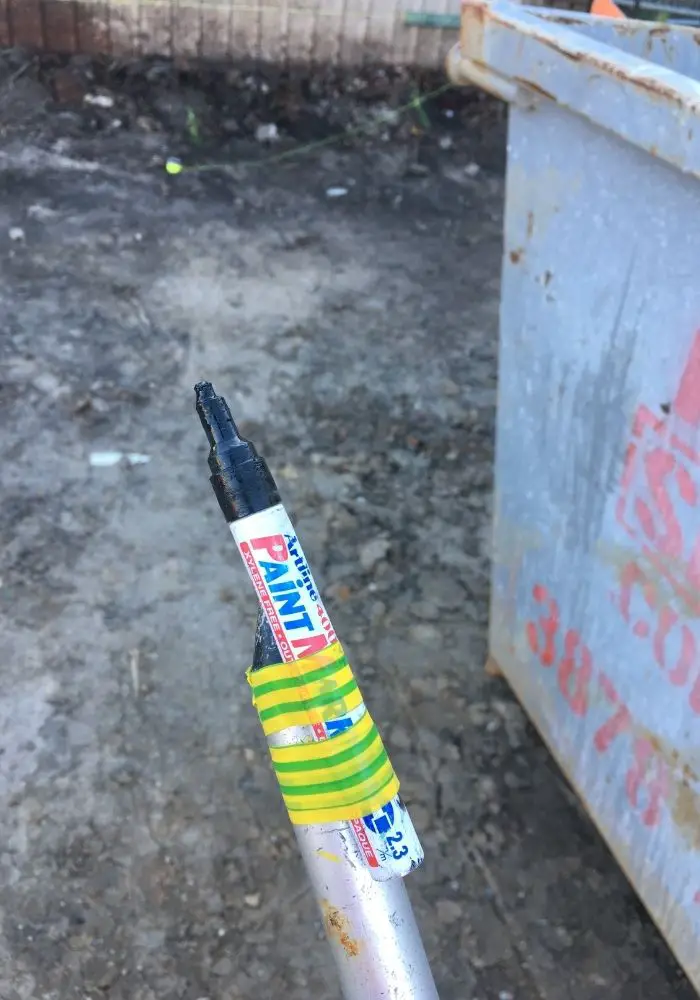Land and construction surveyors use many different types of survey markers to mark survey control stations, setout points or property boundaries. Different types of marks that surveyors use include wooden stakes and pegs, iron pins and pipes, a variety of nails and spikes, brass plaques, reflective retro sticker, spray paint and marker pen.
Property Markers
The types of marks that surveyors can use to mark a boundary are usually regulated by local laws. The different types of marks used to mark property boundaries are:
Wooden pegs
These type of pegs are used to mark property boundaries in Australia. They can be either 2×2 inch, 3×3 inch or 2×3 inch depending on which state the survey is in and if the survey is in an urban or regional area.
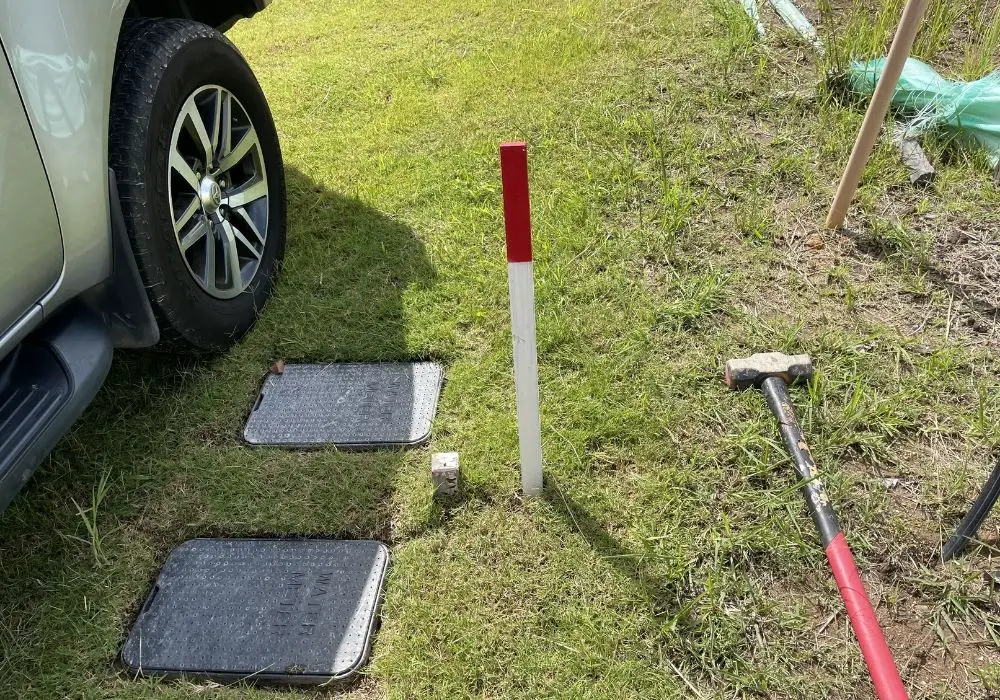
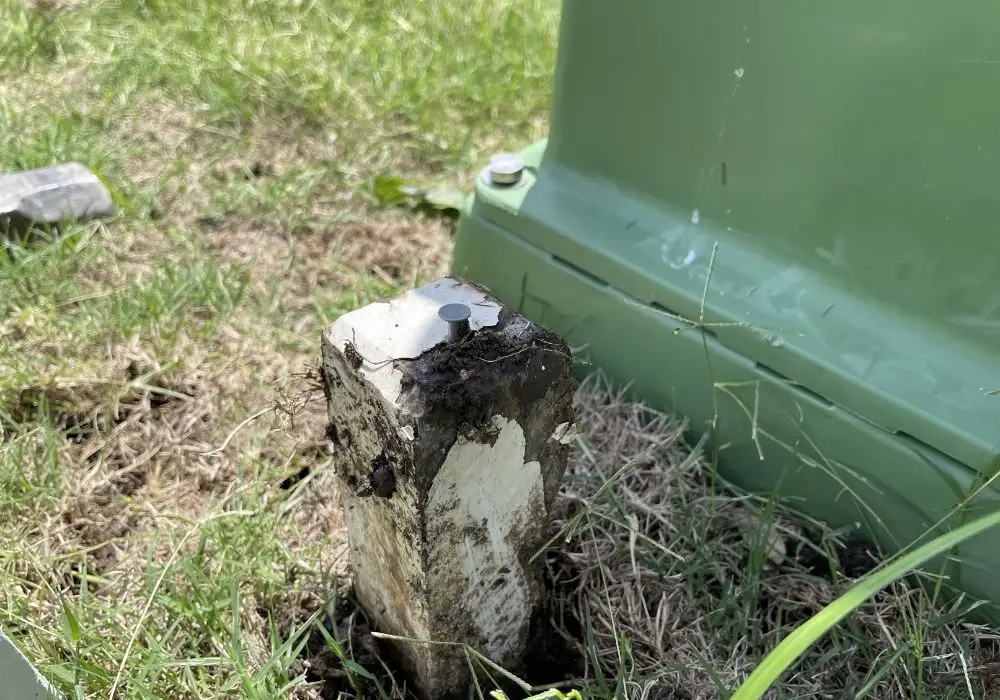
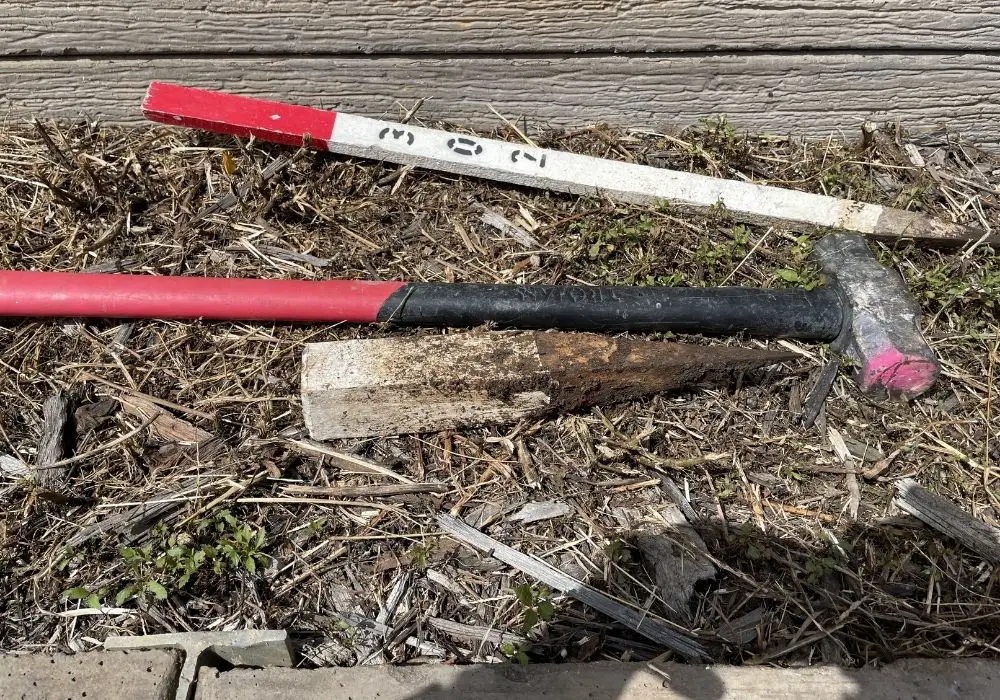
Plastic Pegs
Plastic pegs come in the same sizes as wooden pegs. However, they come in two pieces, a metal rod to be driven into the ground, and the plastic peg “cap” that goes on it.
Reference Tree
These types of marks were commonly used in the early days of surveying. This is because the tree was fairly stable and likely to stay for a long period of time.
The purpose of blazing a tree and referencing it was to assist future surveyors reinstate the property boundaries.
Reference Marks And Control Station Markers
When a surveyor is working in an area that will need to be returned to at some point in the future, as part of the survey they will survey in control stations. They will then be able to occupy these control station in the future to be able to conduct the survey on the same datum as the previous surveyor.
Deep Driven Rod
Traditionally used when a high degree of accuracy is required, a deep driven rod is a precise and highly reliable type of survey mark.
The rods come in various lengths (as small as 300mm and can also be over 2.0m long) and has a thread to connect each rod together.
The process to install a deep driven rod is:
- Drive the first rod in with the pointed end
- When that rod is almost flush with the ground, screw in another length of the rod and continue driving the rod into the ground
- When the rod is nearing refusal (unable to be driven in anymore), drive it so it is beneath the surface 2-3 inches and screw in the cap.
The rods are made of a material that is not usually non-corrosive like aluminium or stainless steel.
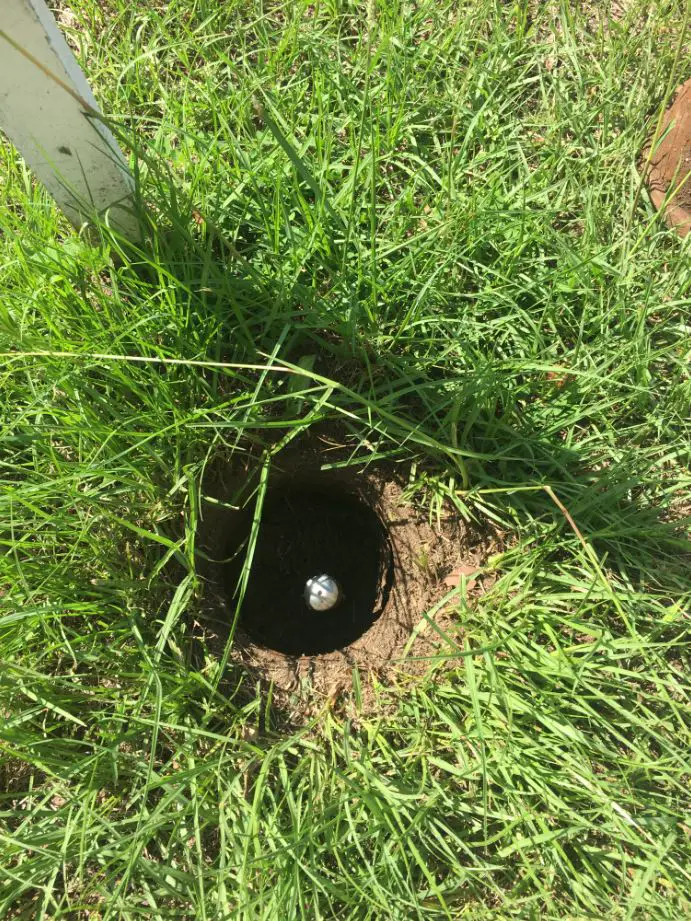
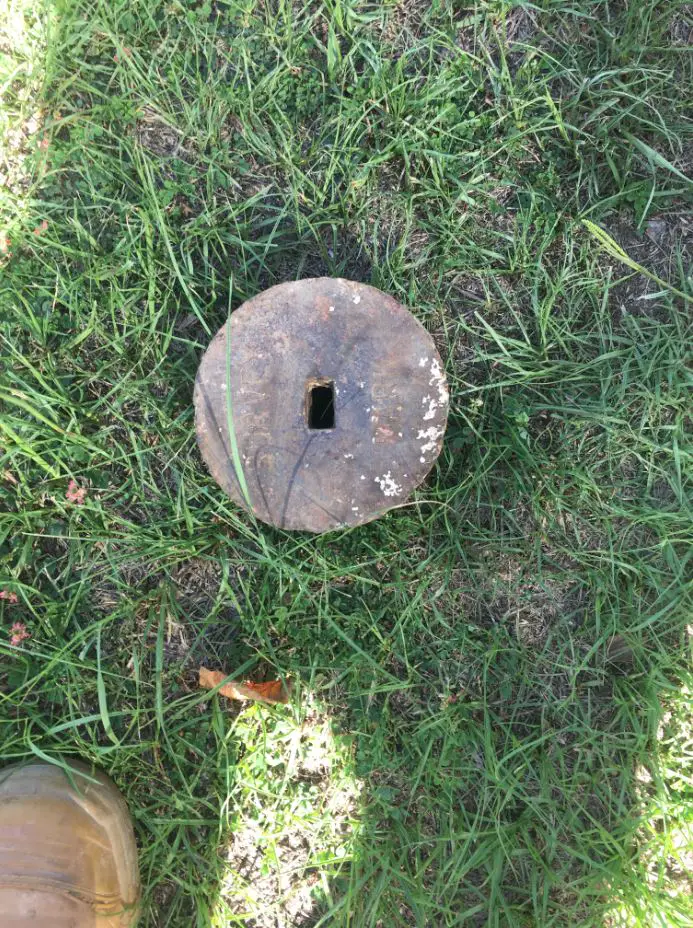
Iron pin
These are usually buried beneath the surface and are commonly used as reference marks in cadastral surveys. There is no standard size required for pins but commonly they are 300 millimetres long, and 20 millimetres in diameter.
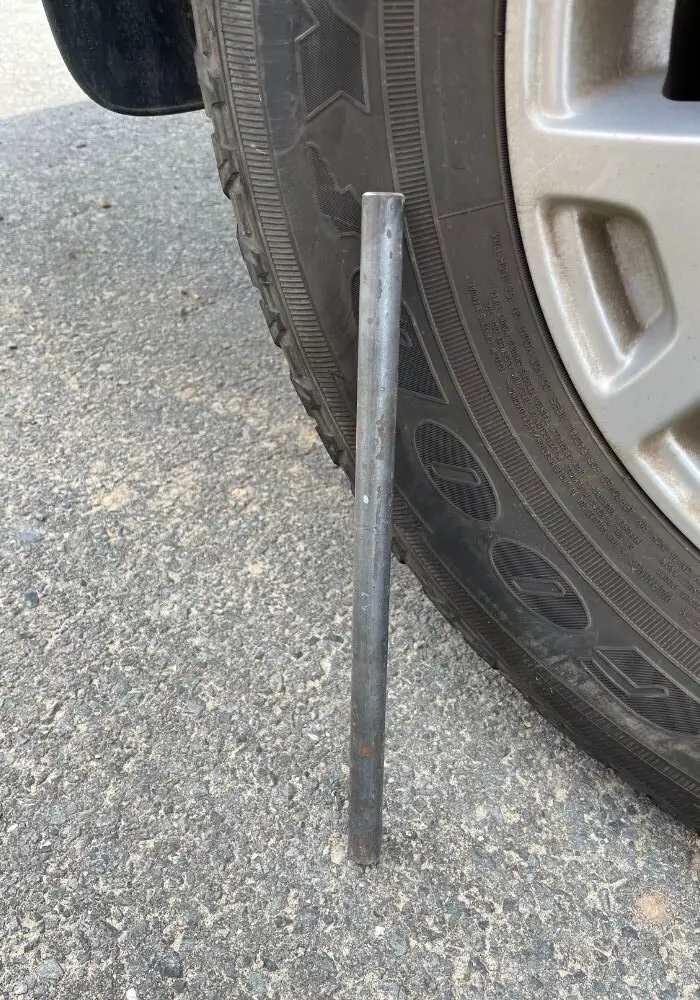
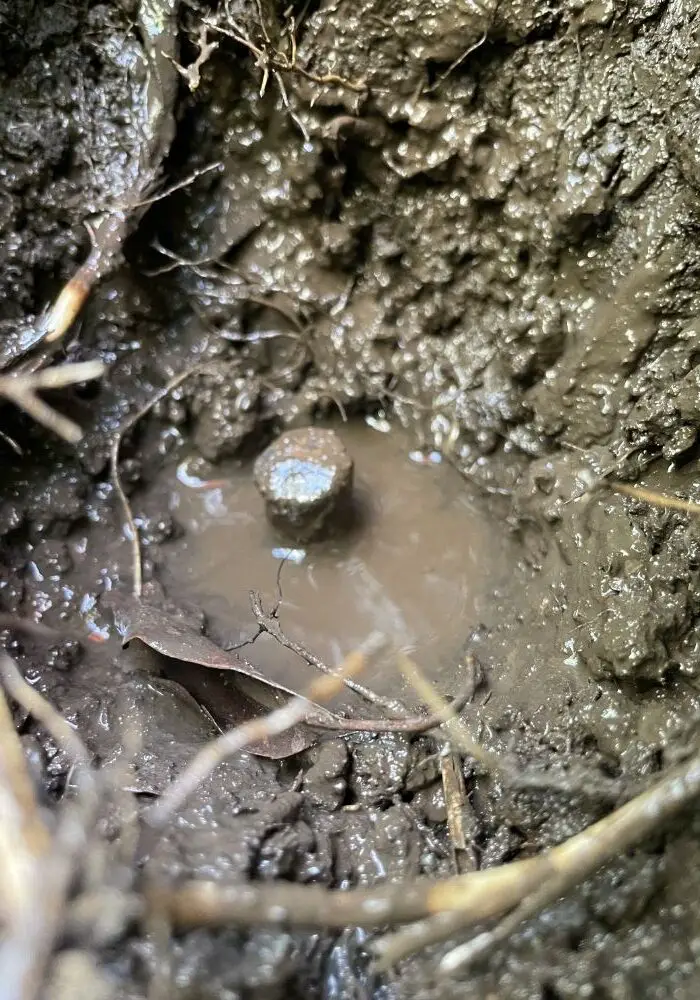
Iron pipe
These are used the same as the iron pin and are commonly used in cadastral surveys in New South Wales. Pipe dimensions are not set in law, but the length is usually 300 millimetres long.
Concrete Nail
Concrete nails and a popular type of survey mark because they can easily be put in concrete footpaths or kerb, and unless they get removed they are a stable control station.
They are also commonly used in construction setout, as a convenient way to mark points that won’t get rubbed out by site activity.
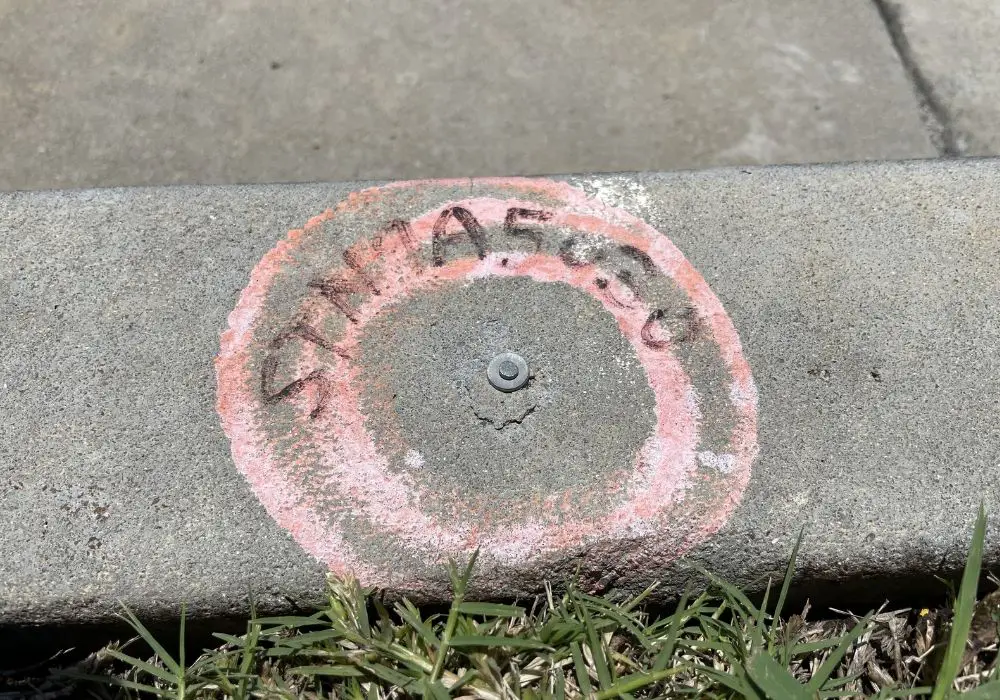
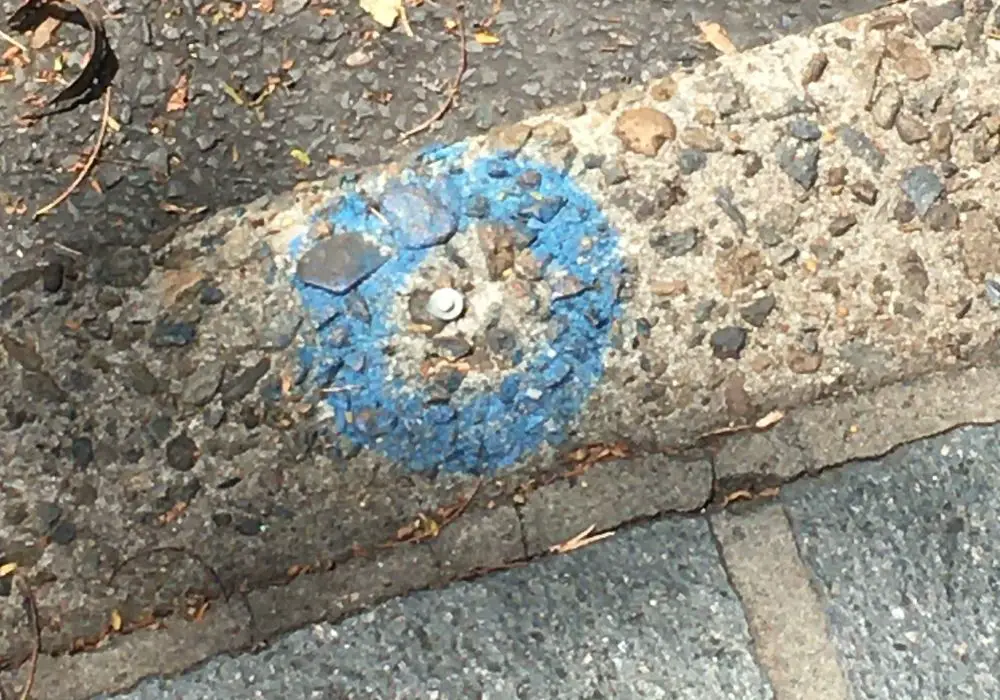
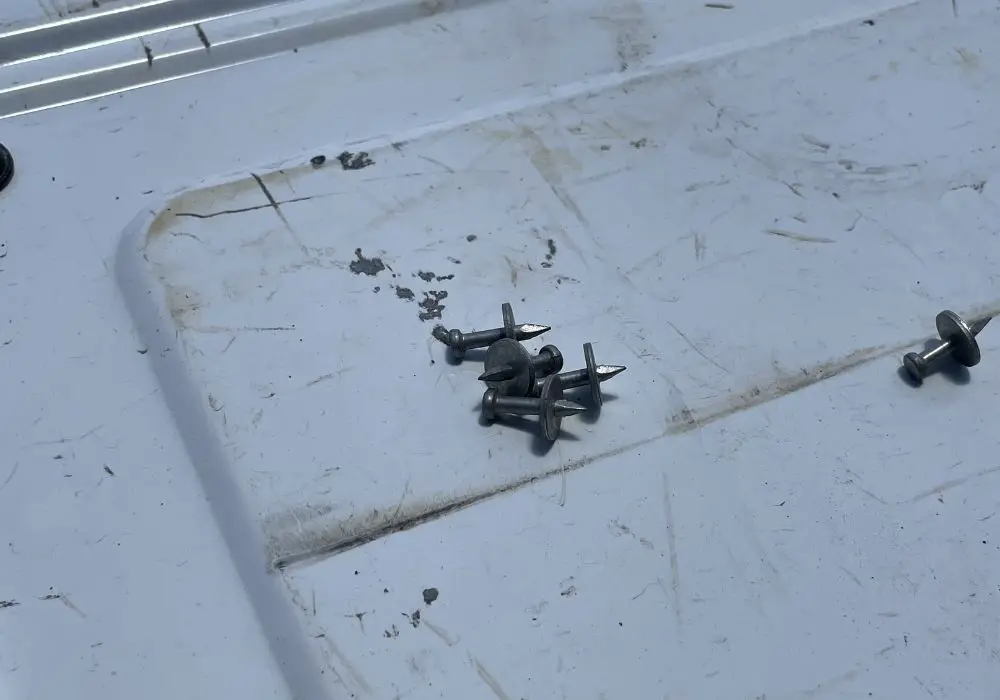
Galvanized Nail (GI Nails/GINs/Spring-Head Nails)
Galvanised nails is a good type of mark if you need to put a mark on some bitumen, like in a car park or the shoulder of a road.
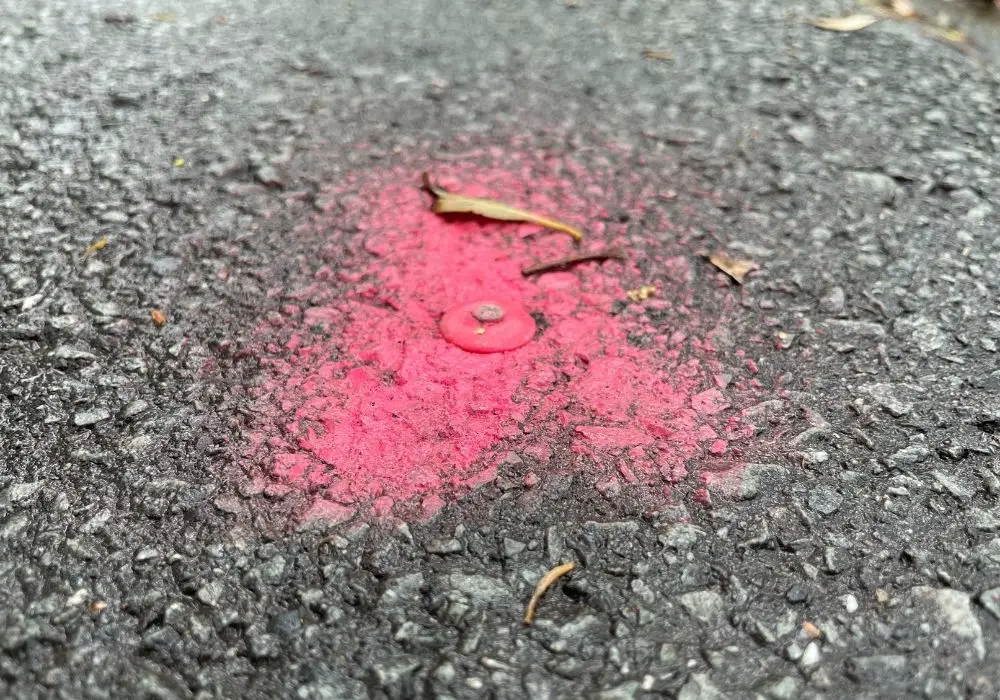
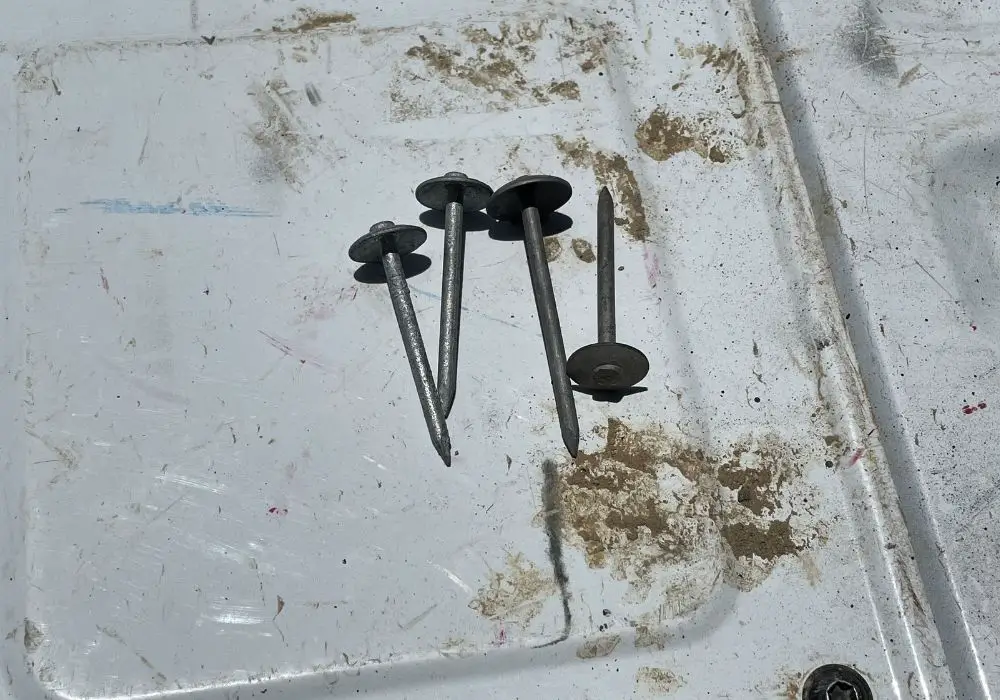
Brass Plaque
Brass Plaques are used for what is called permanent survey marks. They usually would be stamped with a unique number and registered with the local land authority.
Brass plaques are fixed in place by concrete. Below is a plan showing what it may look like under the surface.
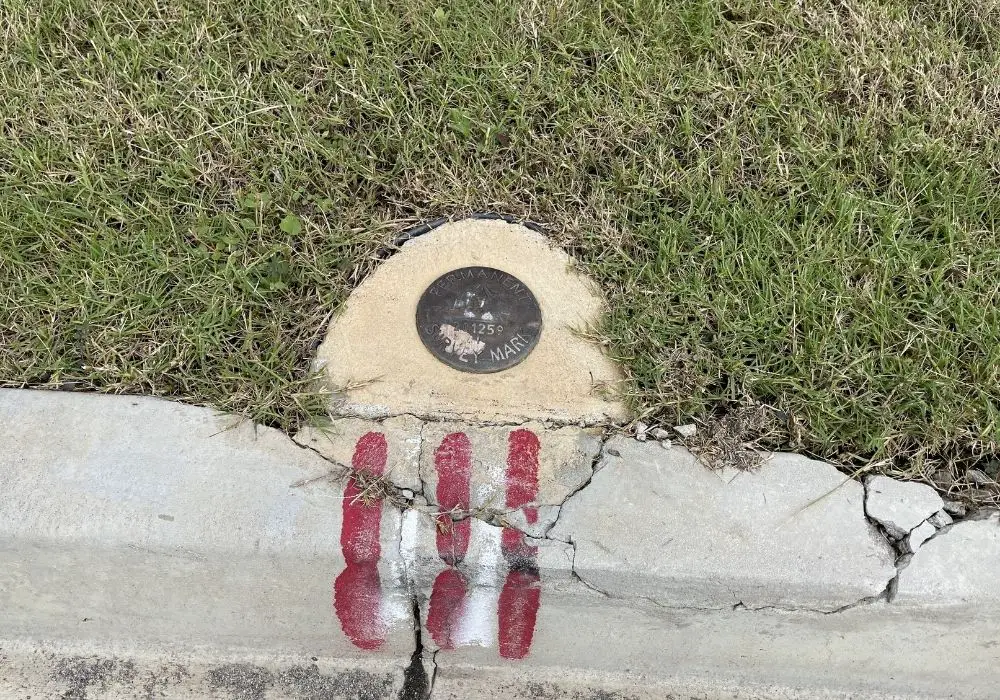
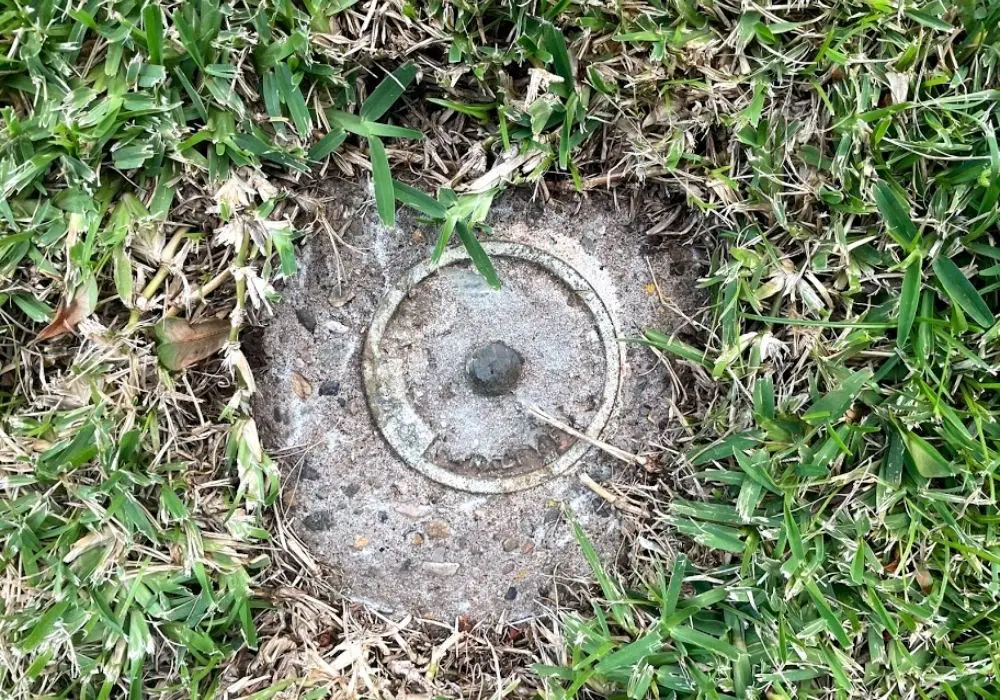
Mini Mark
Another type of mark used for Permanent Survey Marks (PSMs) are mini marks.
They are a state issued washer with a stamped unique identifier, that is held in place by a pin that is drilled and hammered into the ground.
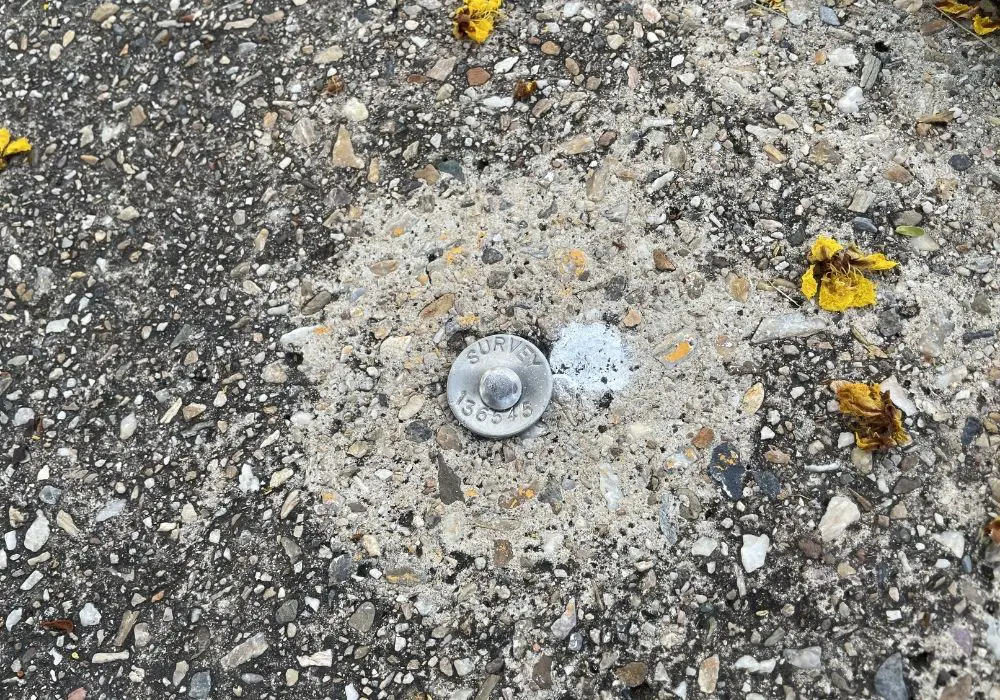
Drill Hole & Wings
This is another popular control mark for cadastral survey plans as they are easy to put in on any concrete kerb. All you need is a drill with a 6 millimetres concrete drill bit and a cold chisel to chisel out a broad arrow.
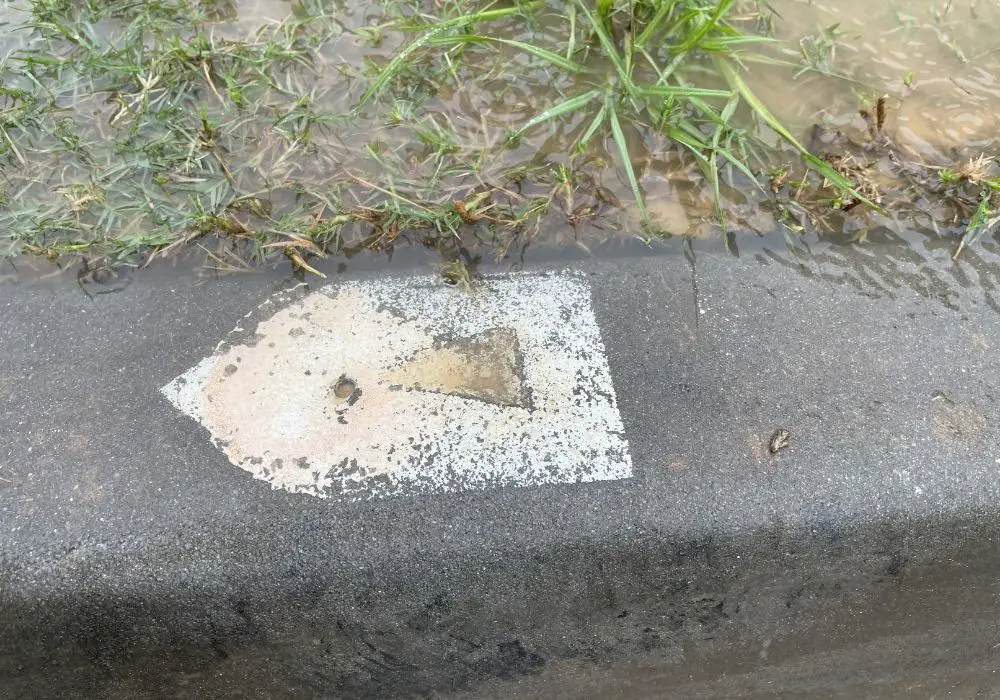
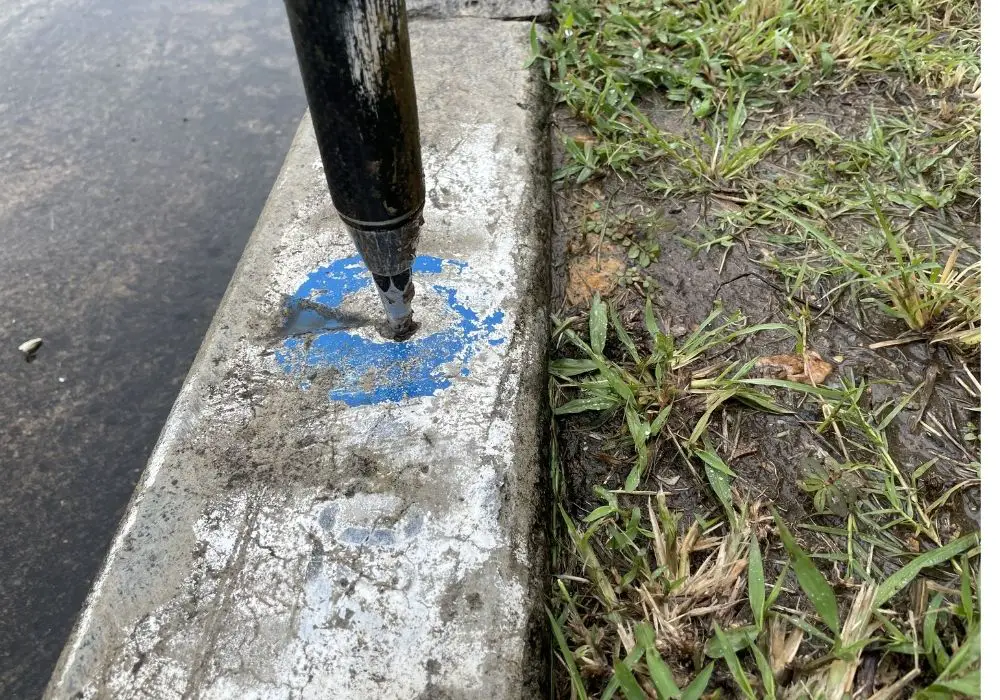
Screw or Bolt
Like the concrete nail these are a very good control station type and is set in the concrete they are a very reliable control mark type. Since they are drilled in place they are more likely to last than a concrete nail as it only goes less than 10 millimetres into the concrete, whereas a screw can be more than 20 millimetres in concrete.
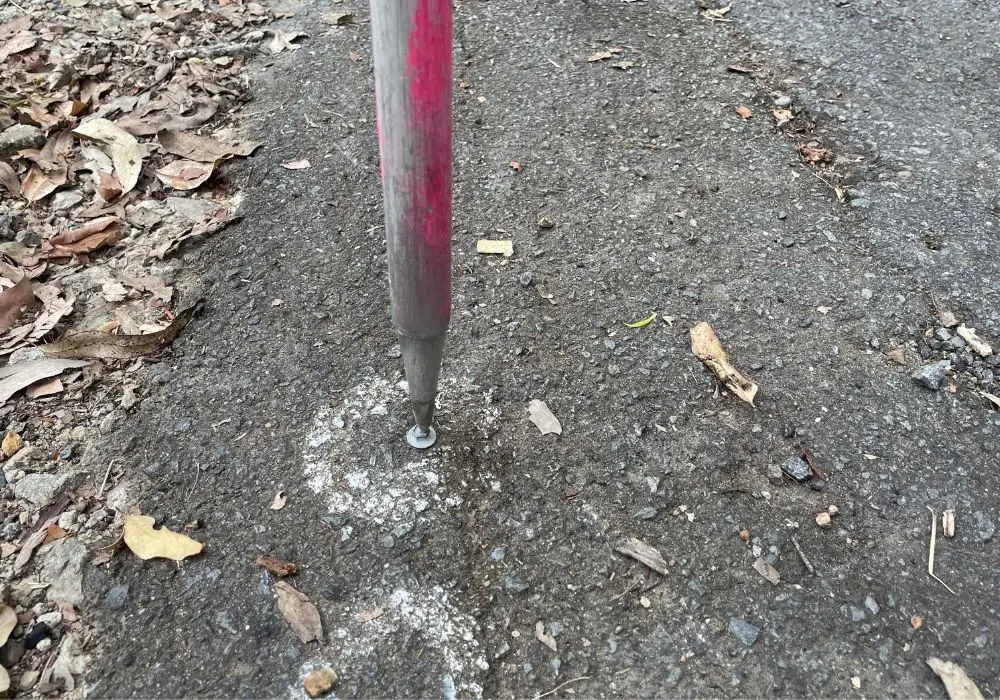
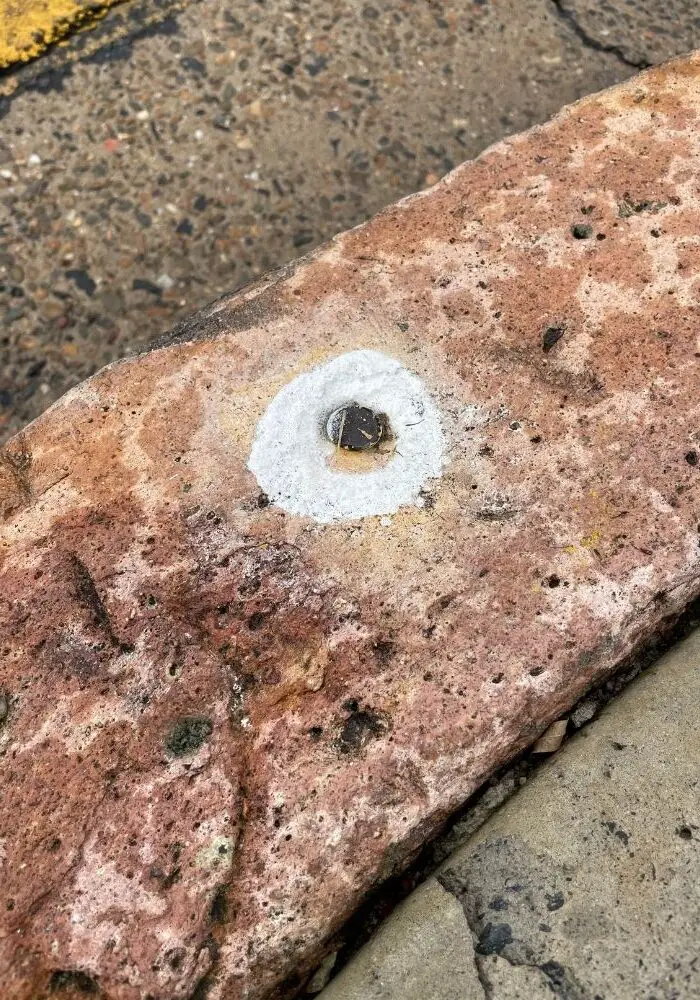
Deck Spike
Deck spikes are used in either grass or dirt areas usually. They also make convenient levelling change points, because they can be left proud (sticking out of the ground) and easily removed once the level run has been completed.
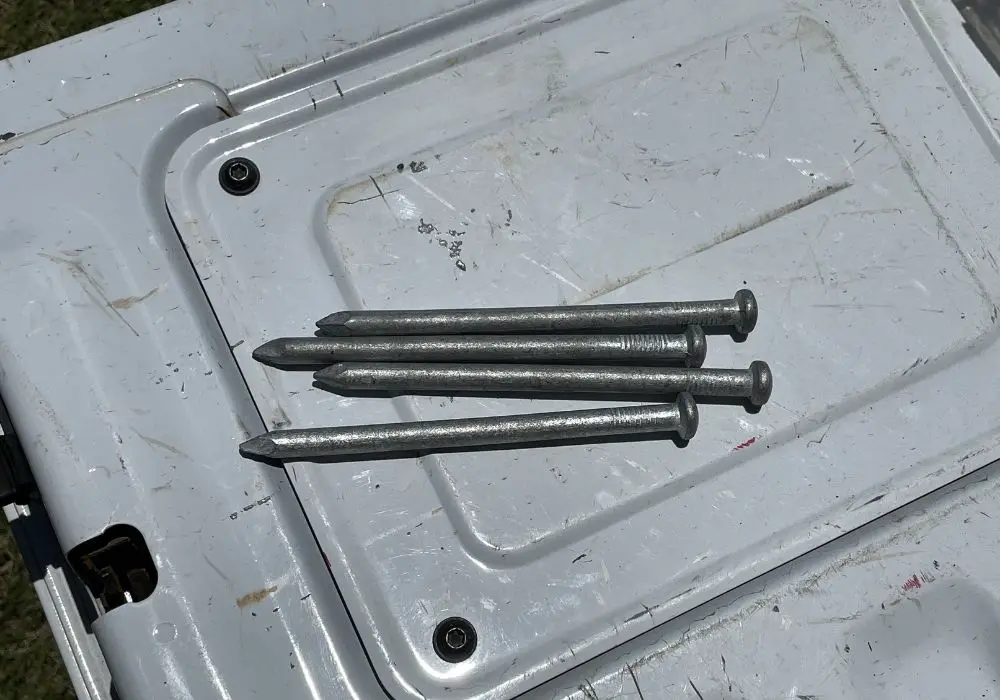
Star Iron Picket
Depending on the type of ground these marks can be anywhere from 200 millimetres to 2.0 metres deep. The longer the star iron picket you may need a post driver to put it in.
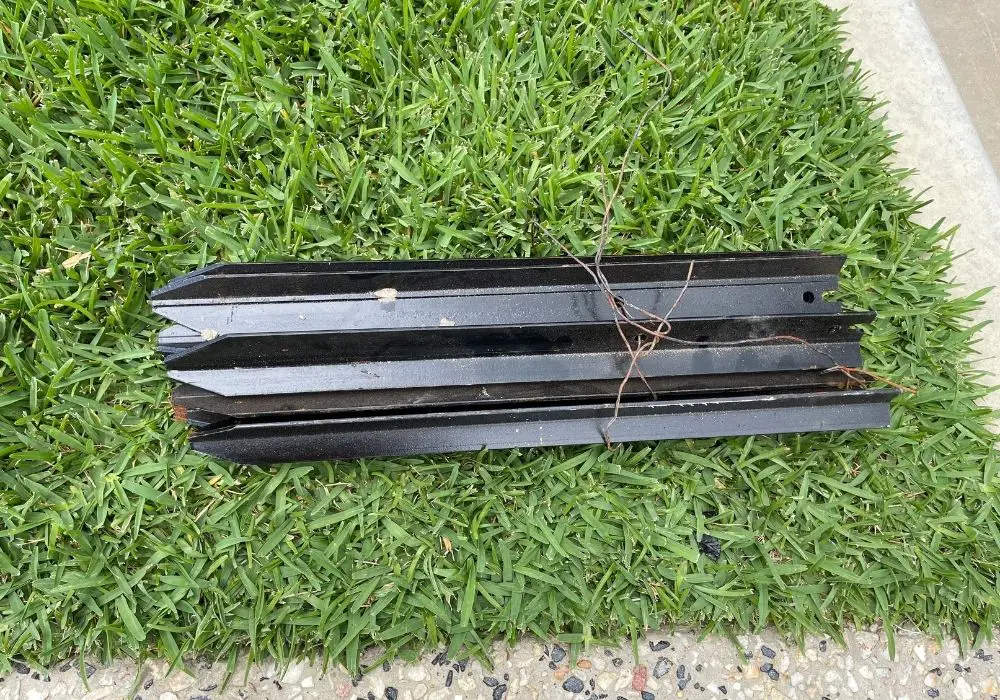
Dumpy Peg
A more temporary traverse station mark or setout mark is a wooden dumpy peg.
These are good survey marks because they can be hammered in the soft ground easily where needed. Provided that the ground is stable enough they will be a reliable mark for a surveyor to be able to use in the future until they do get disturbed or removed.
Dumpy pegs can be used traversing for a cadastral or detail survey or used as set out points for engineering and construction projects.
Dumpy pegs can come in a variety of sizes, if you work areas have soft ground you could get a larger dumpy, however if you are used to a hard ground you would then ideally have a smaller dumpy.
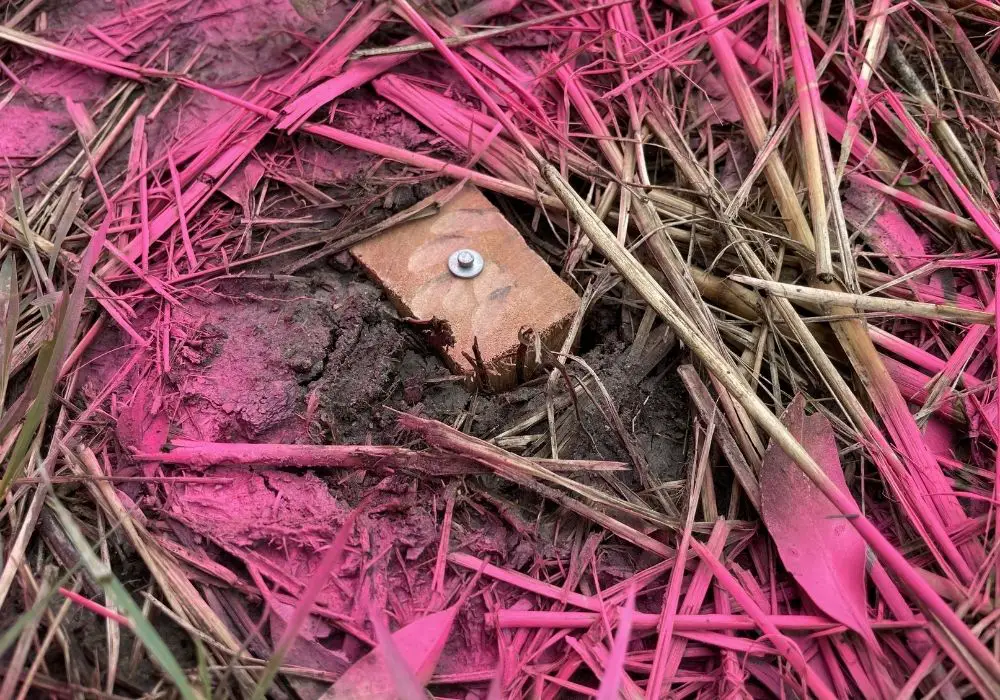
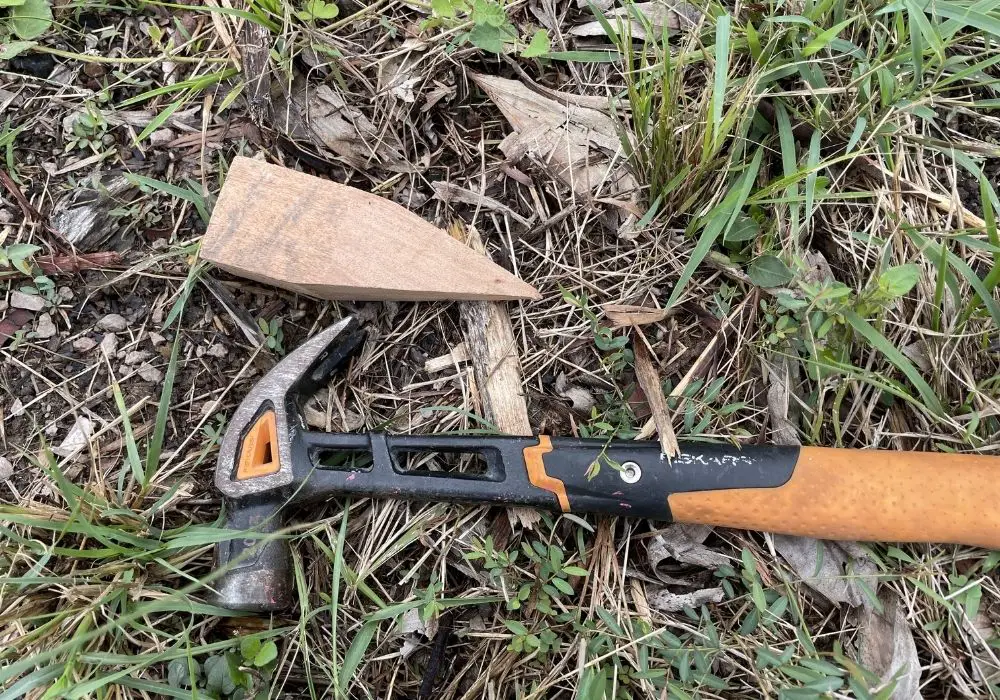
Reflective Sticker Targets
These are a great type of target used commonly in construction surveying. They are able to be stuck on existing buildings, power poles and other structures.
They are fairly permanent as long as they are stuck on properly, you can even use some glue when placing them if you need the sticker to last a long time.
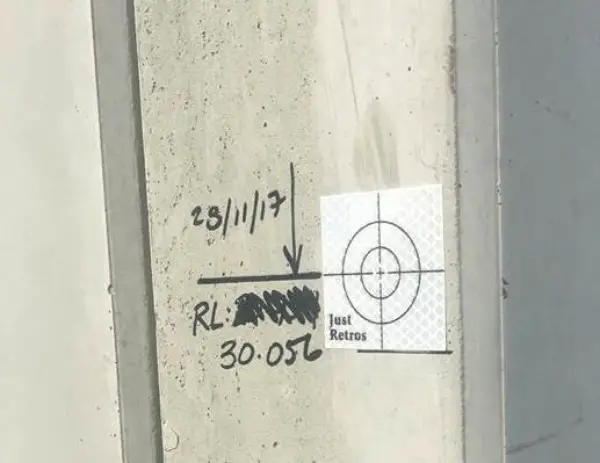
Because these marks can be placed anywhere they can stick, they make great survey marks for monitoring surveys. A surveyor can stick the target on an object and then regularly and remotely measure to it.
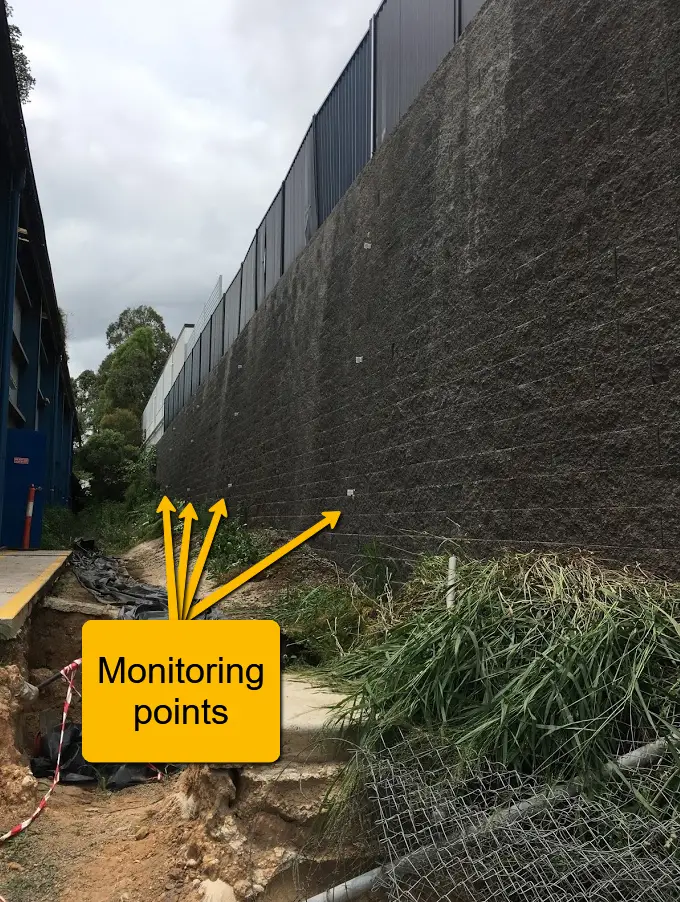
Other Types Of Marks
The above list details more permanent or semi-permanent mark types. If however the mark is not required to be permanent, you can make use of the next two types of survey marks.
Stakes
Survey stakes are a common survey mark used in setout surveys. Commonly used in applications where millimeter accuracy is not required like earthwork and roadwork projects.

Paint Mark
Paint marks can be used as a survey mark if it is not required to be permanent. Paint can be used to mark things such as underground services, clearing lines or rough earthworks.
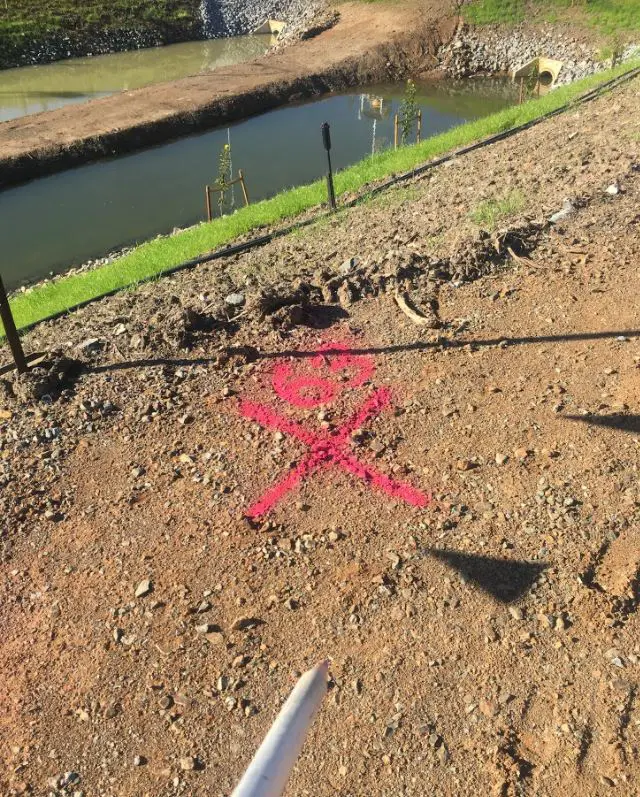
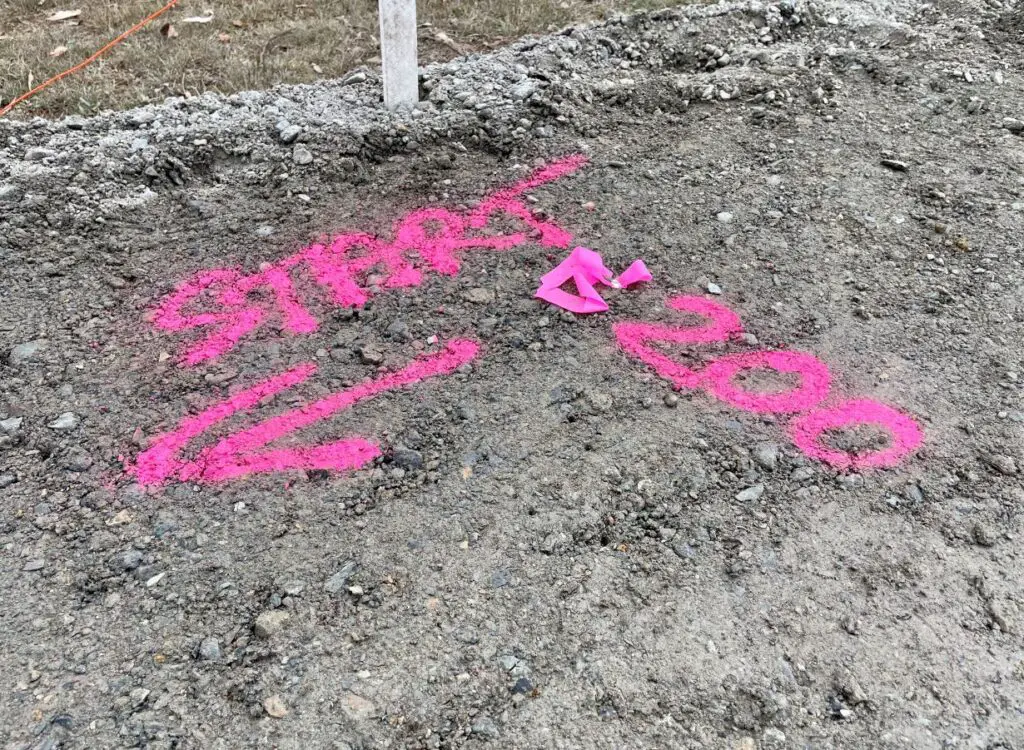
Pen Mark
Similarly to spray paint, you can use a felt or paint pen to mark a point if its ok that the pen may go in a couple of days. You may use this type of mark on construction sites or for temporary control stations for a detailed survey.
